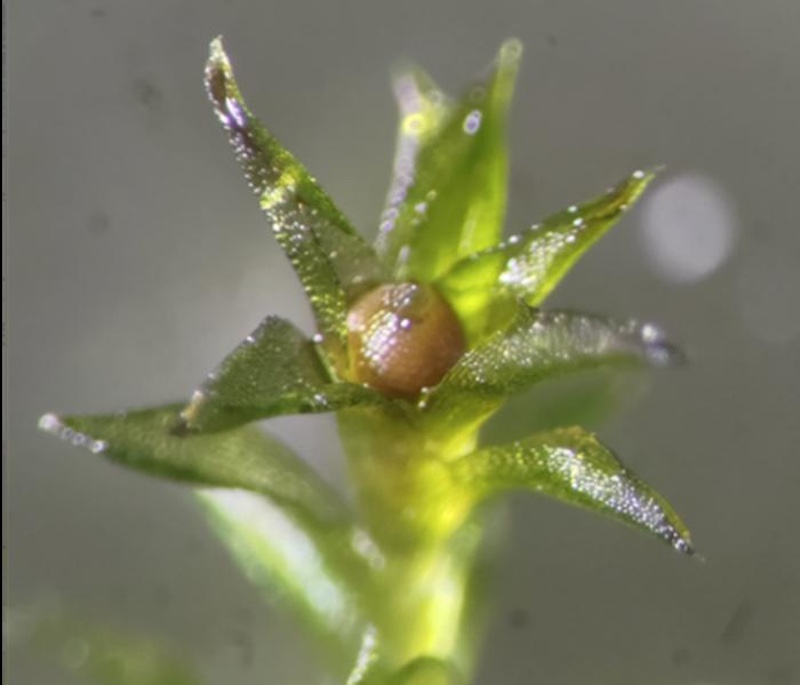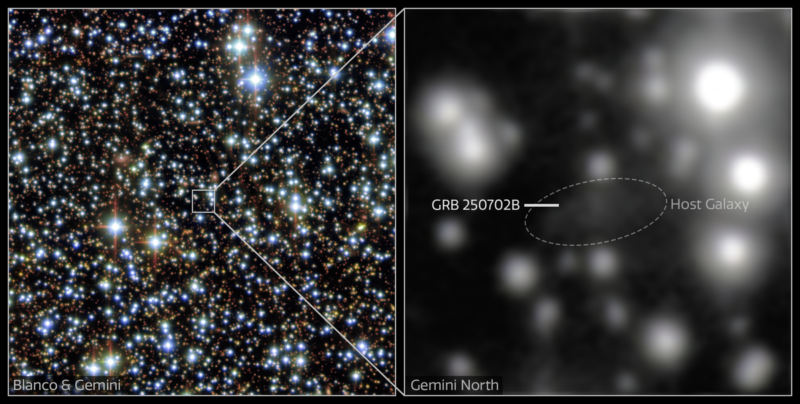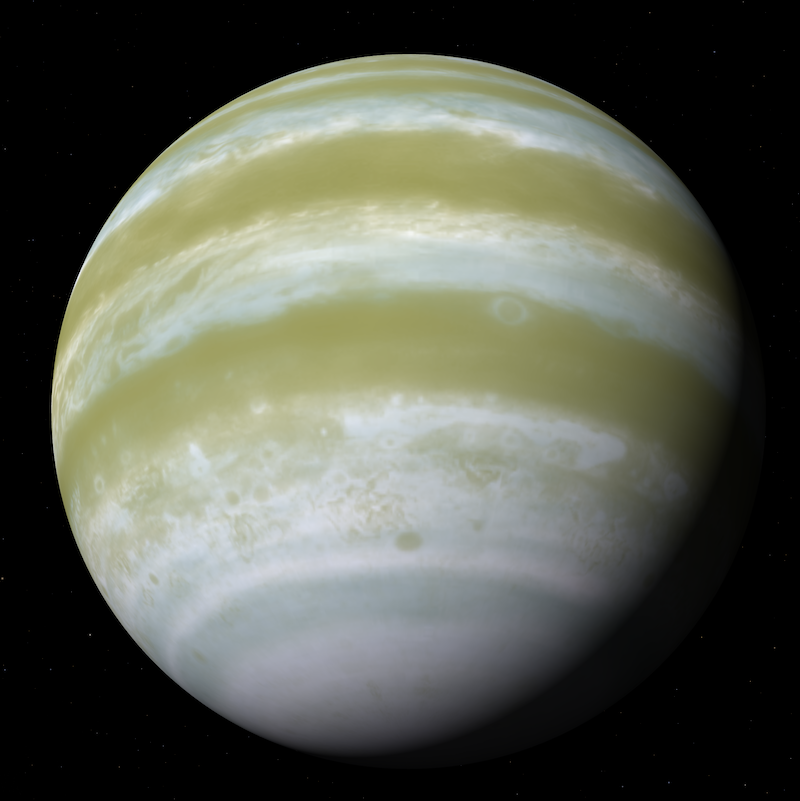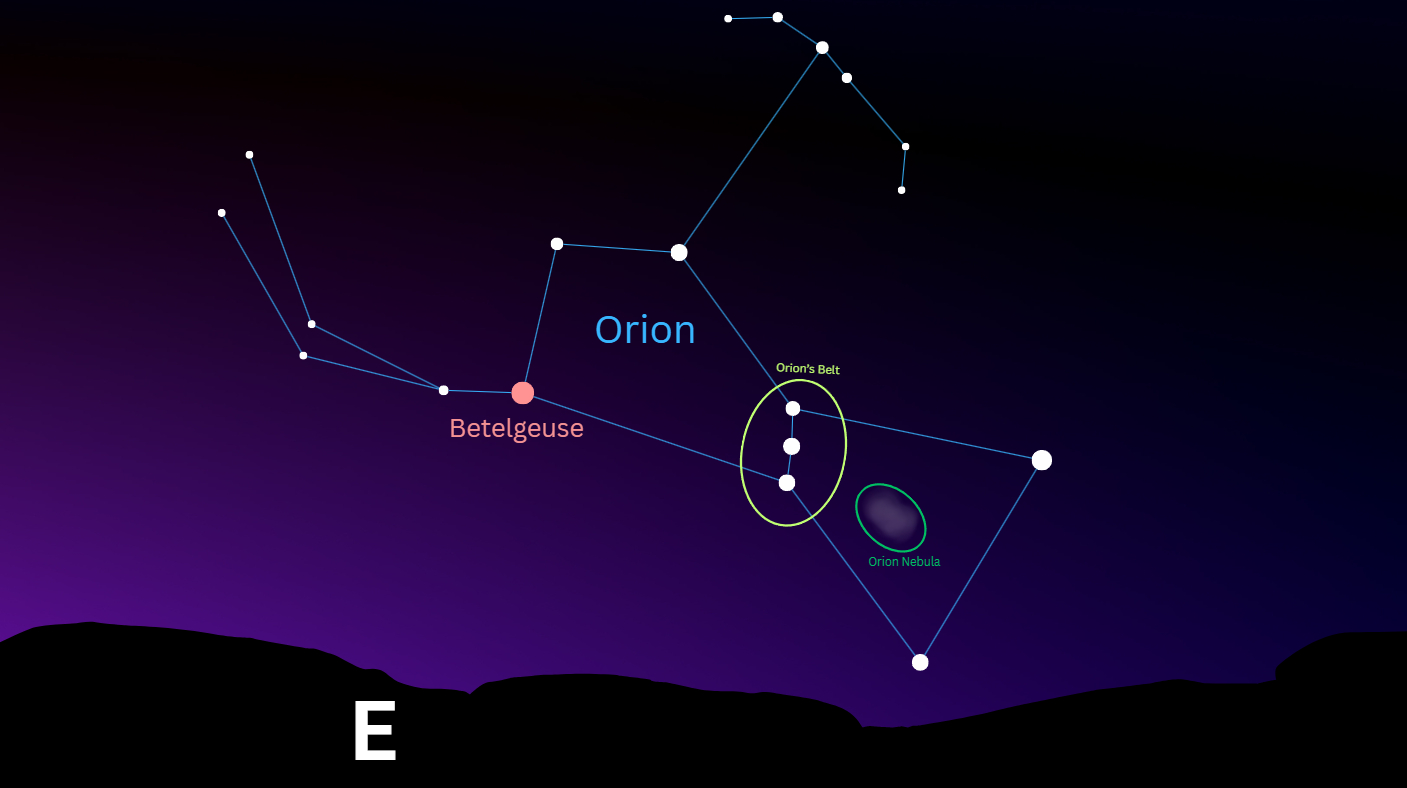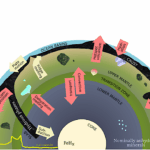Now Reading: Do the organics in Enceladus’ ocean point to habitability?
-
01
Do the organics in Enceladus’ ocean point to habitability?
Do the organics in Enceladus’ ocean point to habitability?
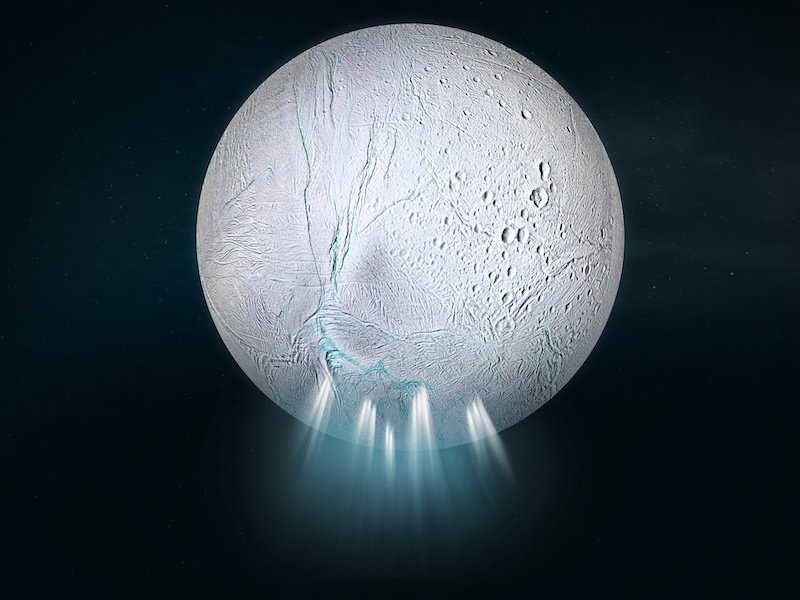
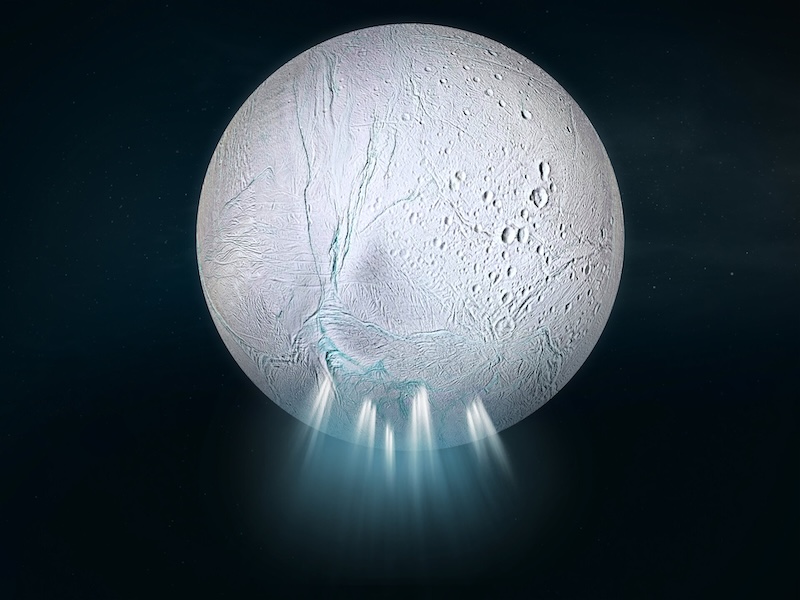
- Saturn’s moon Enceladus has organic molecules in its water vapor plumes and subsurface ocean. Could they be evidence for possible life?
- A new analysis of data from the Cassini mission has yielded even more complex organics. They are in icy grains in both the plumes and Saturn’s E ring.
- The complex organics provide more evidence for complex chemistry and habitable conditions in the ocean below.
New complex organics in Enceladus’ ocean
Last month, scientists reported that organic molecules found on Saturn’s moon Enceladus might be created by radiation. That’s in contrast to the long-held earlier idea that they originate in a hidden ocean, below the moon’s icy surface.
But now, another international team of researchers has said that a new analysis of data from the Cassini mission has found new complex organics that are certain to originate in an ocean below Enceladus’ surface. The researchers said on October 1, 2025, that the organic molecules are in pristine ice grains in the water vapor plumes that Cassini flew through and analyzed.
Organics in the plumes is powerful evidence for organics in an ocean below, and for complex chemistry occurring in the waters below.
The ice grains in the plumes are being ejected from large cracks in the icy surface of Enceladus. Scientists call these cracks tiger stripes. The ice grains were ejected only minutes before hitting Cassini’s Cosmic Dust Analyzer (CDA) instrument. This meant they were as fresh as could be expected.
The research team published their peer-reviewed findings in Nature Astronomy on October 1, 2025.
Organic molecules in plumes and the E ring
Scientists already knew the plumes contained organics since Cassini first flew through them back in 2008. Later analysis showed there were various kinds of organics, both simple and more complex. Cassini also found them in Saturn’s E ring, which consists of particles from the plumes.
Lead author Nozair Khawaja at Freie Universität Berlin in Germany said:
Cassini was detecting samples from Enceladus all the time as it flew through Saturn’s E ring. We had already found many organic molecules in these ice grains, including precursors for amino acids.
One problem with the organics in the E ring, however, is that those molecules can already be quite old, even hundreds of years old. This means they could have been altered by radiation in Saturn’s magnetosphere. Their composition might be significantly different from when they were freshly ejected into space.
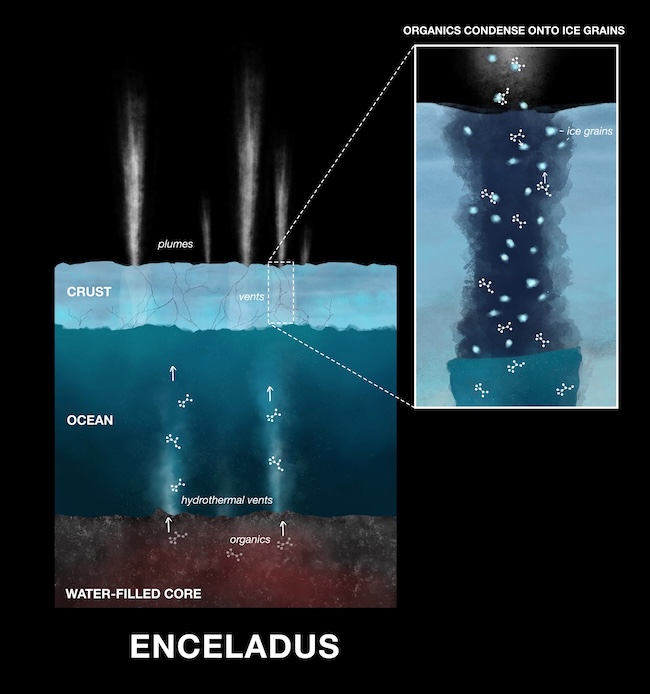
Pristine organics in Enceladus’ plumes
So how could scientists study the organic molecules in their original state? By analyzing those in the plumes, of course. The ones in the plumes just erupted from the ocean below, through the tiger stripes. They were the most pristine that Cassini could ever sample.
Indeed, Cassini had already analyzed some of those organics. The results showed evidence of a variety of organics, as well as water, salts, ammonia, nitrogen, oxygen, phosphorus, hydrogen cyanide and methane. There was even evidence for active hydrothermal activity on the ocean floor, much like on Earth.
? The discovery of new complex organic molecules at Saturn's #Enceladus enhances the likelihood that the moon is habitable ?On Earth, these molecules are involved in chemical reaction chains that lead to the more complex molecules essential for life.Read more ? www.esa.int/Science_Expl…? ? ??
— ESA Space Science (@science.esa.int) 2025-10-01T09:09:47.185Z
Speed matters
But now, the new analysis results take that a step further. And as it turns out, the speed of the ejected molecules makes a difference. It has to do with how fast the molecules hit Cassini’s Cosmic Dust Analyzer instrument. The faster, the better, as Khawaja explained:
The ice grains contain not just frozen water, but also other molecules, including organics. At lower impact speeds, the ice shatters, and the signal from clusters of water molecules can hide the signal from certain organic molecules. But when the ice grains hit CDA fast, water molecules don’t cluster, and we have a chance to see these previously hidden signals.
Old and new organic molecules
The re-analysis of the Cassini data yielded interesting results. Scientists had previously found some of the organics in the fresh ice grains in grains in the E ring. This, the researchers said, confirms that they originated in Enceladus’ ocean. Co-author Frank Postberg at Freie Universität Berlin added:
These molecules we found in the freshly ejected material prove that the complex organic molecules Cassini detected in Saturn’s E ring are not just a product of long exposure to space, but are readily available in Enceladus’s ocean.
In addition, the researchers also found new kinds of organic molecules they’d not seen before. These included complex chemicals including liphatic, (hetero)cyclic ester/alkenes, ethers/ethyl and, tentatively, nitrogen- and oxygen-bearing compounds. That is significant, since on Earth they are part of chemical reactions that lead to even more complex organic molecules needed for life. This increases the chances of the ocean being habitable, as Khawaja noted:
There are many possible pathways from the organic molecules we found in the Cassini data to potentially biologically relevant compounds, which enhances the likelihood that the moon is habitable. There is much more in the data that we are currently exploring, so we are looking forward to finding out more in the near future.

A return to Enceladus?
Cassini ended its mission to Saturn way back in 2017. But scientists with ESA are now planning a new mission, to launch in the early 2040s. This time, the spacecraft would actually land on Enceladus and take samples to analyze.
In the meantime, scientists can still compare the new analysis results with those from other icy moons of Saturn and Jupiter. ESA Cassini project scientist Nicolas Altobelli said:
It’s fantastic to see new discoveries emerging from Cassini data almost two decades after it was collected. It really showcases the long-term impact of our space missions. I look forward to comparing data from Cassini with data from ESA’s other missions to visit the icy moons of Saturn and Jupiter.
Even if we don’t find evidence of life on Enceladus, there would still be a lot to learn about the conditions in its ocean, and perhaps the oceans on other icy moons in the solar system. Khawaja said:
Even not finding life on Enceladus would be a huge discovery, because it raises serious questions about why life is not present in such an environment when the right conditions are there.
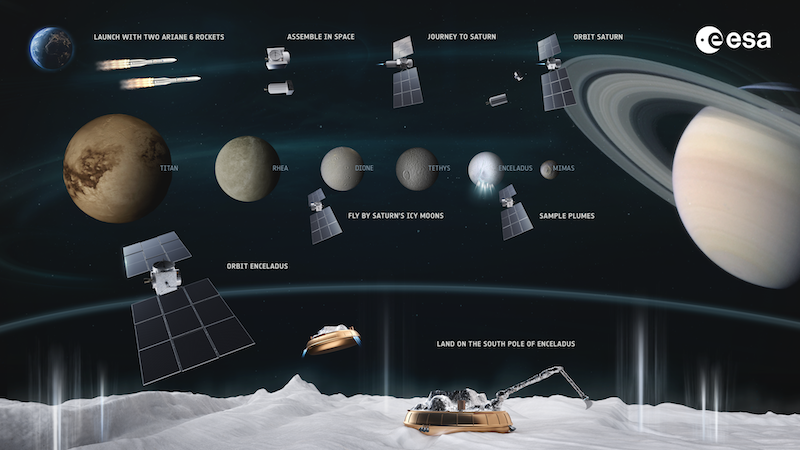
Organics on Enceladus: Ocean or radiation?
The new study is also interesting with regard to another study published last month. That one, presented at Europlanet’s EPSC-DPS Joint Meeting 2025 in Helsinki, Finland, on September 9, 2025, postulated that organics on Enceladus’ surface and in its plumes could be created by radiation in Saturn’s magnetosphere. Those organics included carbon monoxide, cyanate, ammonium and the precursors to amino acids.
This new study, however, published in Nature Astronomy on October 1, 2025, details the additional new organics found in the plumes, including the complex compounds listed above. The researchers are confident that they originate in the ocean. So who is right? Or could it be both? Perhaps some organics are the results of radiation, but others do come from the ocean below.
As happens all the time in science, there are competing hypotheses. But that’s how science works. It will be very interesting to see what else researchers discover about the organics on Enceladus and what they might tell us about the habitability – and perhaps even life itself – of this fascinating little world.
Bottom line: A new analysis of data from the Cassini mission has found more complex organics in Enceladus’ ocean. They hint at complex chemistry and potential habitability.
Source: Detection of organic compounds in freshly ejected ice grains from Enceladus’s ocean
Read more: Complex organics on Enceladus: A clue to possible life?
Read more: Signs of life on Enceladus might remain hidden in its ocean
The post Do the organics in Enceladus’ ocean point to habitability? first appeared on EarthSky.
Stay Informed With the Latest & Most Important News
Previous Post
Next Post
Previous Post
Next Post
-
 012024 in Review: Highlights from NASA in Silicon Valley
012024 in Review: Highlights from NASA in Silicon Valley -
 02Panasonic Leica Summilux DG 15mm f/1.7 ASPH review
02Panasonic Leica Summilux DG 15mm f/1.7 ASPH review -
 03From Polymerization-Enabled Folding and Assembly to Chemical Evolution: Key Processes for Emergence of Functional Polymers in the Origin of Life
03From Polymerization-Enabled Folding and Assembly to Chemical Evolution: Key Processes for Emergence of Functional Polymers in the Origin of Life -
 04How New NASA, India Earth Satellite NISAR Will See Earth
04How New NASA, India Earth Satellite NISAR Will See Earth -
 05And Thus Begins A New Year For Life On Earth
05And Thus Begins A New Year For Life On Earth -
 06Astronomy Activation Ambassadors: A New Era
06Astronomy Activation Ambassadors: A New Era -
07SpaceX launch surge helps set new global launch record in 2024












